Multiplication and division word problems are not what they used to be! No longer can we teach the memorization of facts and be successful! Kids need to be taught to recognize the different types of problems enabling them to chose a strategy that works for them! My favorite method to use is the Cognitively Guided Instruction model.
Cognitively Guided Instruction is an inquiry-based approach to teaching mathematics that was developed at the Wisconsin Center for Education Research (Carpenter et al, 1999). It is based on the developmental stages of math reasoning. Sequencing word problems from easy to difficult helps kids build on what they know.
Multiplication is divided into two categories- grouping and comparing. Division is also divided into two categories- measurement and partitive.
To begin the unit start with 1 step multiplication. Give students sample problem to sort into two categories. Don’t tell them the categories ahead of time! Talk about why they sorted the problems the way they did. Then guide them to the two different categories- grouping and comparing.
Here is an example of the problems they sort:
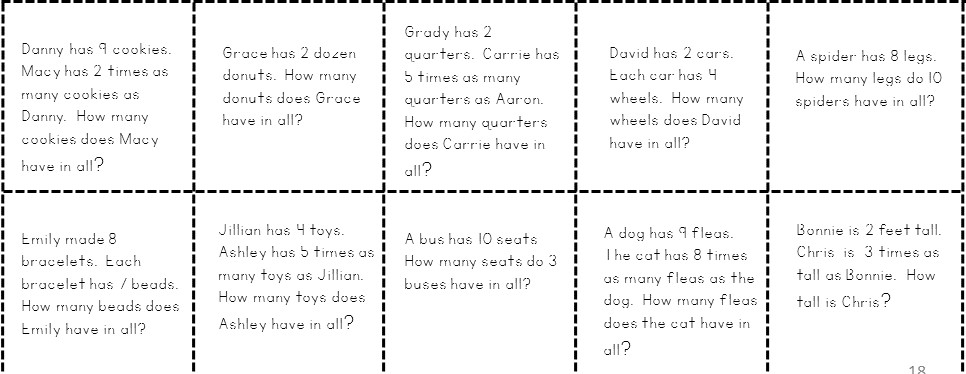
Problem sorting for multiplication- grouping and comparing
After kids have learned about the similarities and differences of the two, begin to work some problems. Start with easy problems and move to more difficult problems.
I like to use problem solving mats in guided math to work through these problems. Here is the answer sheet for a grouping problem. The kids have plates and cookies (paper cookies – I’m not brave enough to give out really cookies as manipulatives!) to model the problem. Start with equal groups, then arrays, area models and final connect with the basic fact. Kids then work a few of the problems from the sort before we move to comparing.
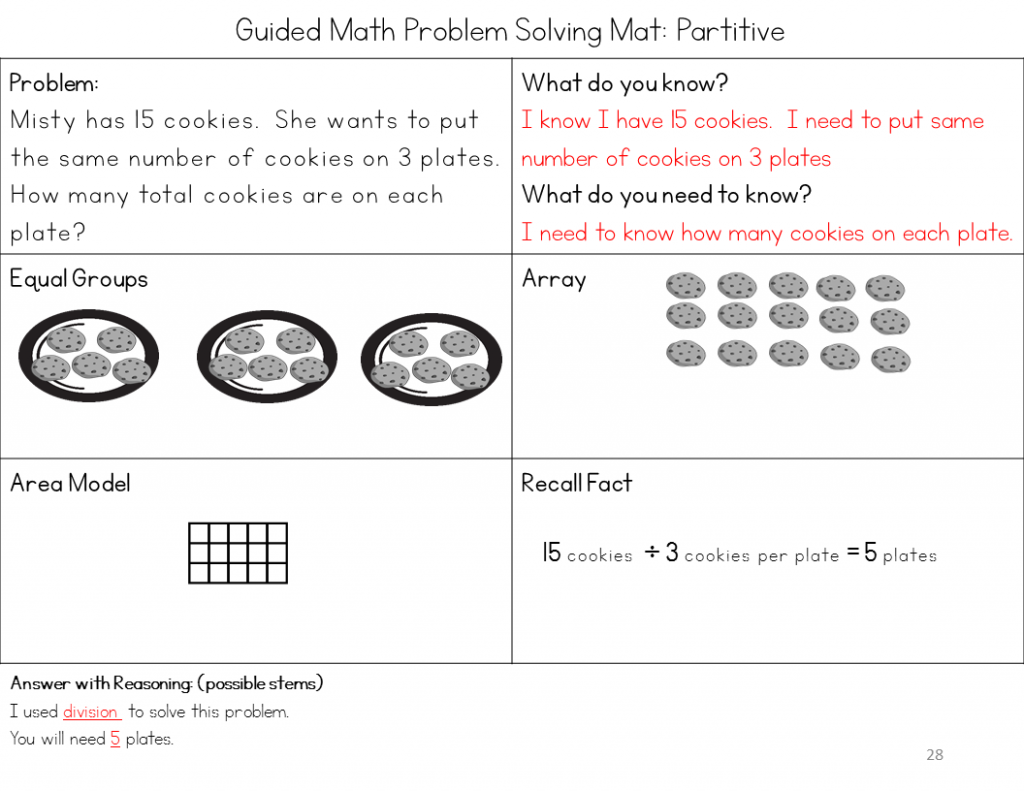 The next type is a comparison problem. This one is difficult. The strip diagram is essential to solve comparisons with multiplication. Teach it to them now if you have not already! The problem solving mat looks like this:
The next type is a comparison problem. This one is difficult. The strip diagram is essential to solve comparisons with multiplication. Teach it to them now if you have not already! The problem solving mat looks like this:

As teachers we see this as multiplication. The word times gives it away, but for some reason kids can’t visualize this unless we teach them to draw a strip diagram. Repeat the same procedure as before – discussion, strategies, and working a few problems.
The next step is to work some problems individually so you can determine where understanding is breaking down. For this activity, each student has a problem solving mat. They read the problem and choose a box to fill in. Rotate the paper and they fill in a different box. At the end, kids have used several different strategies to solve the problem- the answer is not as important as the strategy! 
Continue working on 1 step problems. Go through the same process for division. The kids begin by sorting problems. Most people don’t understand the two types of division – measurement and partitive. Measurement is when the number of groups is unknown and partitive is when the number of items in each group is unknown. Sounds trivial, right? BUT if you approach a measurement problem the same as a partitive problem it will be confusing! AND these kids are 8! Look at the following problem solving mats to see the difference.
For partitive, start with the number of plates, then kids can put cookies on the plate. This type is the easiest for kids.
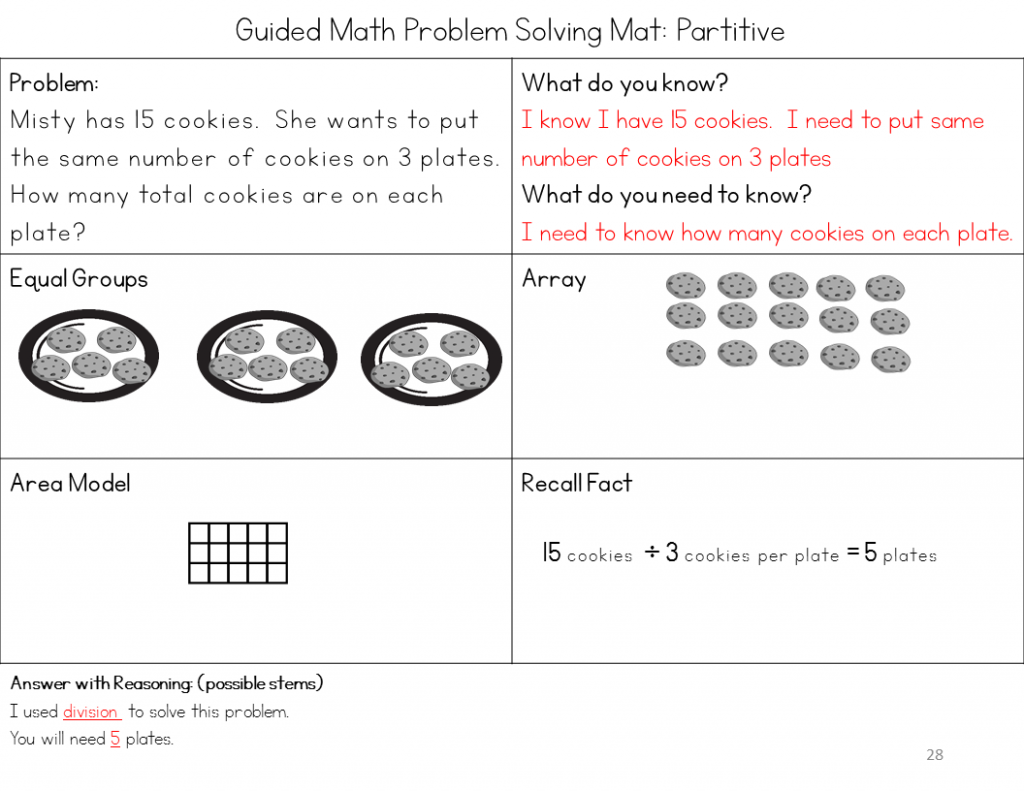 Measurement is tricky – you don’t know how many groups you will need. Kids have 15 cookies in their hands and are unsure how to start grouping them. Start by putting 3 cookies in a group, then make another group until you are out of cookies. Talk and talk some more! Look at the other strategies – array, area model, and repeated subtraction! Show repeated subtraction last because it is the easiest and you want them to try to visualize equal groups first.
Measurement is tricky – you don’t know how many groups you will need. Kids have 15 cookies in their hands and are unsure how to start grouping them. Start by putting 3 cookies in a group, then make another group until you are out of cookies. Talk and talk some more! Look at the other strategies – array, area model, and repeated subtraction! Show repeated subtraction last because it is the easiest and you want them to try to visualize equal groups first.

The next step is to work independently. Use the same strategy for independent practice as multiplication – pass a problem.
Finally you are ready for 2 step problems! Start with a problem solving mat and show them the how to see the two problems in this paragraph. Go slowly and find similarities and differences.
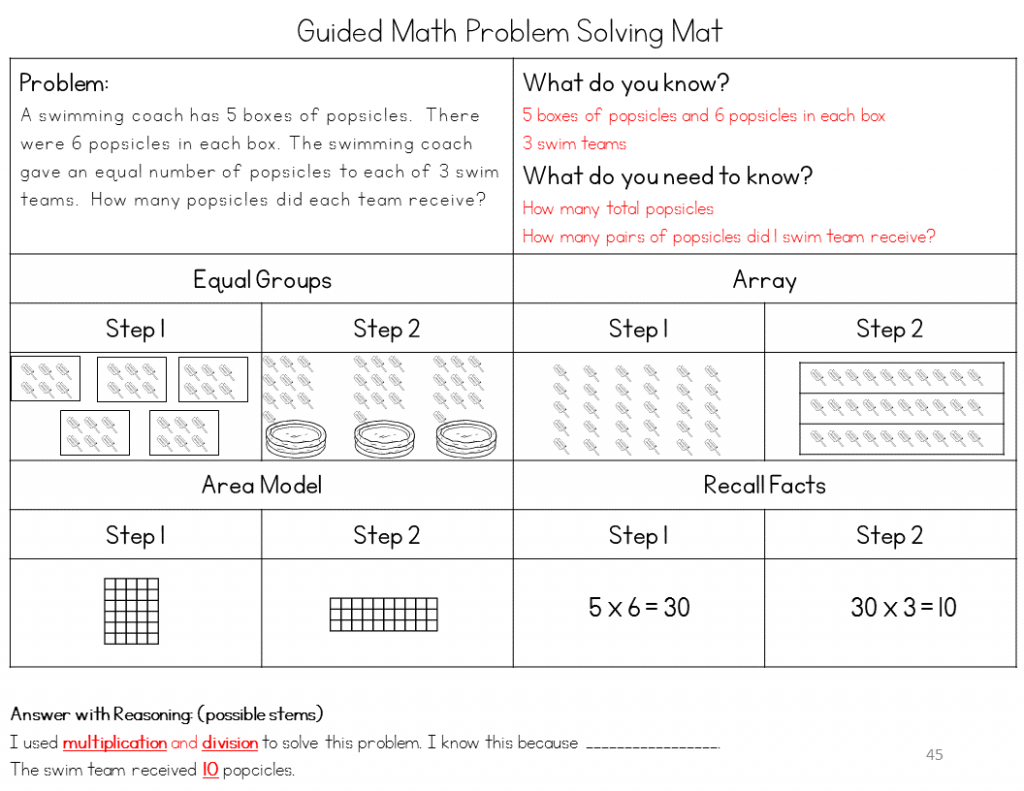
Work several problems, making small changes to what they already know!
By the end of the week, most kids are working 1 step and feeling better about 2 step problems. Add 1 and 2 step problem task cards to stations the next week and continue to pull small groups of kids who still need help!
These task cards have a QR Code, making them self checking!
You can find this product on my Teacher’s Pay Teachers store at:
1 and 2 step Multiplication and Division Unit
Included in the unit:
- 5 Complete Lesson Plans- high yield and sheltered instruction strategies included!
- Guided Math Problem solving mats
- Teacher answer keys for the mats
- Problem sorts with pockets for Interactive Notebooks (INB)
- Anchor Charts for INB’s
- Small Group Independent Practice
- Exit Tickets
- Manipulatives
- 4 Whole Class Activities
- 20 Task Cards- Color and Black and White with QR Codes for Self-Checking
- Answer Sheets
- Bubble sheets
- Open responses
- Griddable sheets
- Teacher Answer Keys for all activities.
I hope this helps your students and helps make your life easier!
Talk to you soon,
Misty

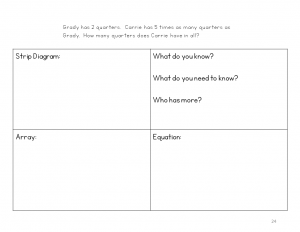
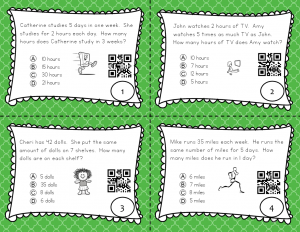
Facebook Comments